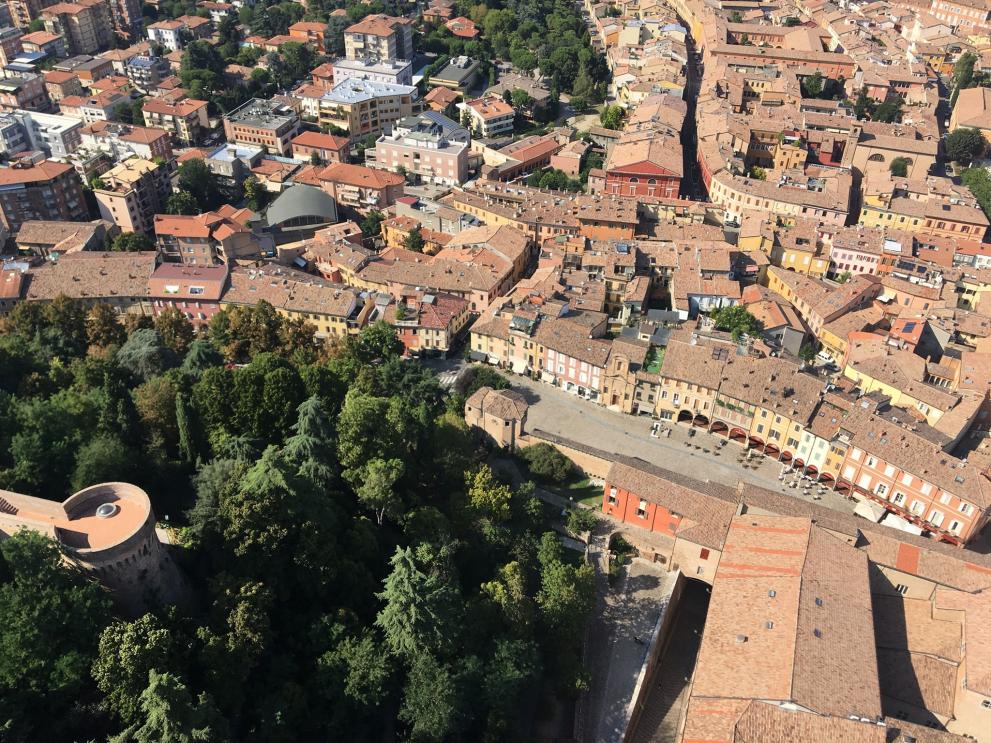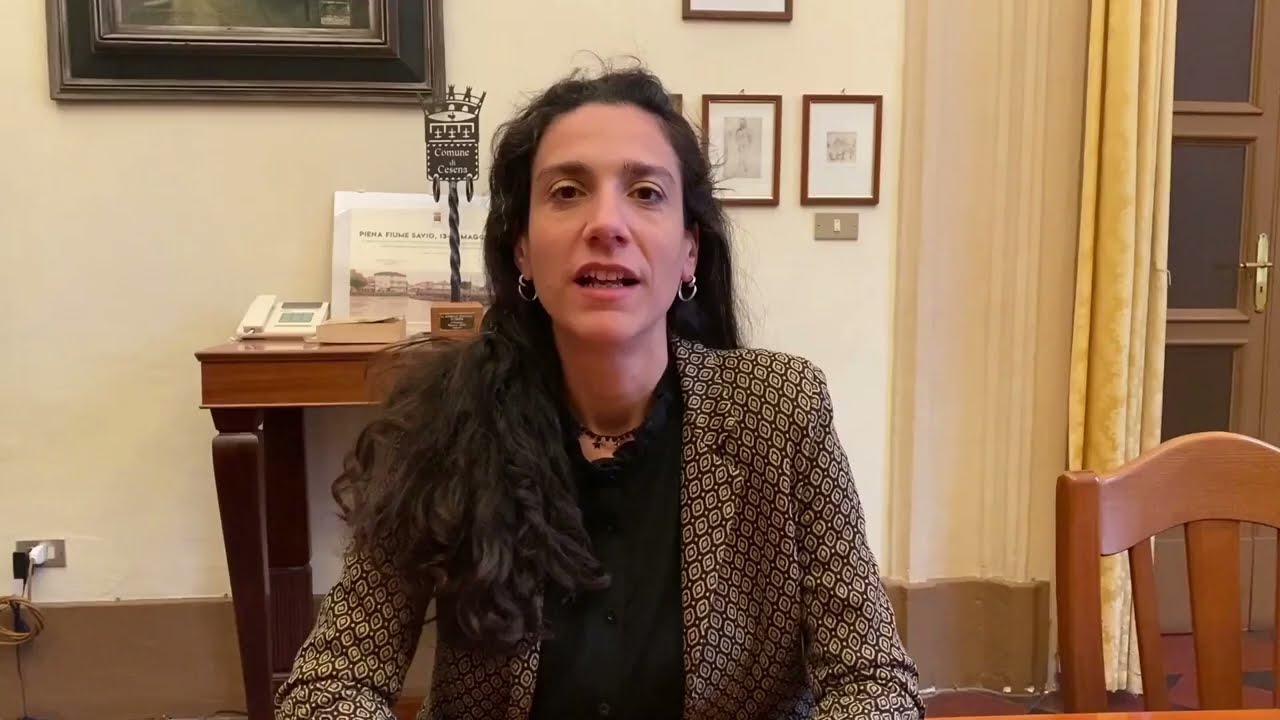
Photo: City of Cesena, Italy
In the wake of the energy crisis sparked by Russia's invasion of Ukraine, the Cities Energy Saving Sprint emerged as a critical campaign to mobilise cities and empower them in their efforts to implement emergency energy-saving measures. The Italian city of Cesena was an active participant of the Sprint from the beginning. Not only did they respond to the immediate crisis, but they also took the opportunity to strengthen their work with citizens and make them protagonists of the city’s climate and energy actions.
We talked to Cesena’s Councilor for Environment, Francesca Lucchi, to find out more about how the city took ownership of the Cities Energy Saving Sprint campaign and how it has contributed to their long-term energy and climate action plan.

Photo: Francesca Lucchi, Councillor for Environment Sustainability of the city of Cesena, Italy.
Of the measures that Cesena took in the context of the Energy Saving Sprint, which seem to have been the most impactful?
First of all, the Sprint highlighted the importance of reducing the consumption of gas, starting from public buildings, and also transferring the communication on why this is important at all levels, thus including private buildings and households. All this was done with the aim of reducing bills (we started off with a contingent theme), but also of improving the quality of life of our citizens and protecting the environment.
What results have you been able to observe from the Energy Saving Sprint?
In part thanks to the Sprint, we have installed new systems in many public buildings: we have a maintenance and renovation project that goes on from year to year, and this year it came to fruition again. In parallel, we have launched communication campaigns. All this led to the reduction of public consumption by the 28% over the course of the winter season. And I think it is an important, very concrete and tangible result for us.
How did you engage citizens in the Energy Saving Sprint and get them to take ownership of the Sprint?
We started in schools. We think that schools are an important communication hub and we involved several of the schools in our city and many students. At the same time, we activated communication campaigns that could be 360° also with the aim of transferring knowledge and skills for the correct use of energy. The “Sportello per l’energia” (energy desk), set up by Energie per la Città, has this function for us: that of creating skills on the subject of sustainable energy.
What was the general reaction to the Sprint from your citizens and from the youth and students in particular?
We received great response and active involvement, especially in the classes and among the students. They produced videos, posters, images on climate change and the conscious use of energy. I think this is an important aspect and that the involvement of young people is crucial to create a positive communication in our city and also to give the correct knowledge to the citizens of tomorrow.
Could you give concrete examples of some of the projects organized in schools as part of the Sprint that you think are worth highlighting?
We did workshops with the students, but also and above all with the teachers. I believe that this is what it can give continuity to the campaigns: training and raising awareness of those who educate and of the education community of our city. It’s a sign of continuity and continuation of the projects. At the same time, we did various activities, including practical ones, to give the children the opportunity to experiment and think. We started with simple labs, for example building paper houses, to give them the opportunity to think about energy issues and energy consumption issues in private homes.

Photo: “La Città Sostenible della Classe IVB », School projects around the Cities Energy Saving Sprint in Cesena.
What advice would you give to other cities on the best ways to raise awareness / engage citizens around energy saving?
I think that the role of cities is key. Cities’ networks are born with the aim of creating a collective awareness and cities are always the ones that are able to roll up their sleeves and start first, and then trying to involve other levels of local and superordinate authorities. Transversal communication is certainly a key aspect, as is everything that concerns citizen involvement, from gamification to nagging – gentle nudges that stimulate people to consume less and get involved in active policies; also considering the economic impact that these sustainability policies have, which are not only linked to the quality of the environment but also to the economic quality of a family. I think this is another important appealing factor.
What have you learned from the Energy Saving Sprint?
It certainly has been a moment of collective reflection that is pushing us to understand how important it is to go in this direction: to reduce energy consumption. I believe that every city must have the forward-looking goal of trying to be self-sufficient, also supported by high-level national and European policies. I think this offered us a good occasion to take this path, and to reflect on how appropriate and necessary it is for us to keep moving in this direction.
What Sprint measures are you planning to keep in place for the following winter? What would you like to see embedded in longer-term strategy to tackle climate change?
Next winter, we will continue to work significantly on behaviourial change, starting with public buildings. Perhaps this year was the first year in which we really worked on behaviour: on giving ourselves directives on how to maintain the systems, on to regulate temperatures... We will continue along this line because it is the only measure which, alongside the systems’ upgrading, actually leads to an improvement in consumption. And I believe that this must be part of our active policies at 360°, making it clear that what is done in the public sector can also be done in the private sector, as well as in companies.
How does the work you carried out in schools during the Sprint connect with your broader citizen engagement strategy around climate questions?
We have been part of the Covenant of Mayors for some time now: we have drawn up a SECAP and we have the ambitious goal of reducing consumption by 30% between now and the next few years. So I believe that this is another fundamental element in achieving long-term objectives, starting with young people, children, schools … and without forgetting that this is how we get more and more families involved. Pebble by pebble, it is always us, citizens, who, by moving around, producing energy, living in our homes, working, etc., produce a significant amount of CO2 in a city. Piece by piece we must achieve ambitious goals that lead us to be a sustainable society as a whole.
The interview is available in other languages in our online library!
Building on the Sprint: Europe endured last winter, but the energy crisis persists. Simultaneously, the escalating hazards linked to the climate crisis, such as heat waves, droughts, and floods, exert mounting pressure on local governments across the continent. The Cities Energy Saving Sprint conducted last winter demonstrated the inseparable link between both crises and the necessity of combating them together with common solutions. Cities, at the forefront of these challenges, have emerged as pioneers in adopting such measures. Draw inspiration from the Sprint's success stories to keep saving energy in your city, prepare for the upcoming winter, and accelerate progress towards climate neutrality.
Översikt
- Publiceringsdatum
- 5 September 2023
